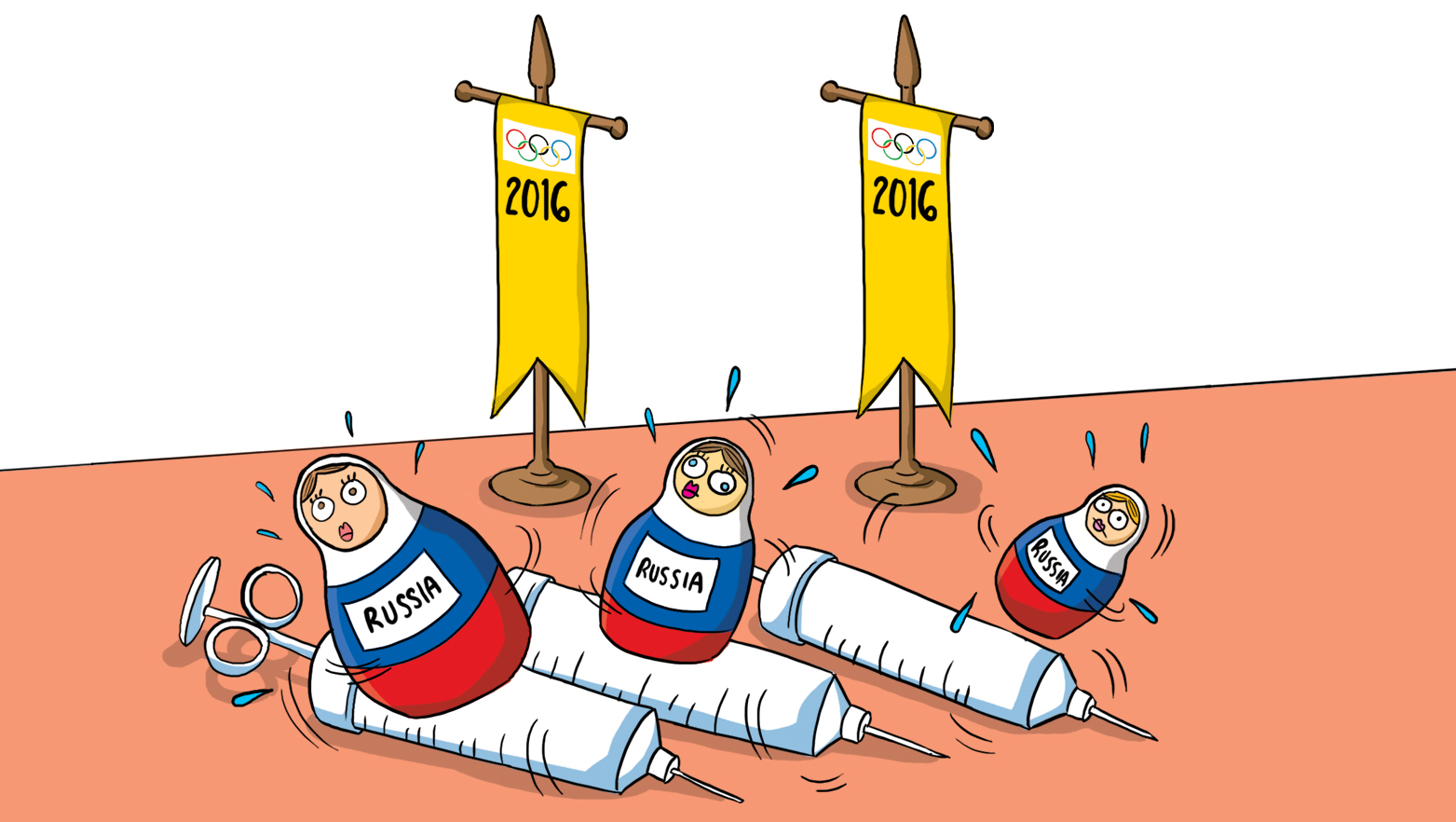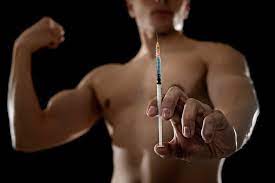-
Your shopping cart is empty!
The use of performance enhancing drugs in sports is increasingly present among athletes and is widely known as doping. According to the International Olympic Committee, doping implies the use, intake, and administration of foreign or more significant substances to the human body than the amount the organism contains typically to artificially stimulate and increase the competitive abilities of athletes. This is contrary to sports ethics as well as the physical and mental integrity of athletes.
In this article we will look into:
When people are watching their favorite athletes or their favorite team, the majority of them have no insight into events behind the scenes. When the spotlights are turned off, and the athletes return to training and preparations, often doping is used behind the curtain.
The general population, sports fans, and even many athletes at lower levels of competition do know very little about using performance enhancing drugs in sports. They refuse to believe that professional sport is poisoned by doping in all areas and choose to believe that it is healthy and innocent.
In sports, there are records set that no other human being would be able to break without using any sort of doping. Of course, there will be athletes who can push boundaries but there are a lot among them who are trying to use an easier way to win. Interestingly there are a group of people who are advocating for allowing doping in sports. They want to level the field for everyone and want to see how far people can push themselves. This is quite a bad idea since some types of doping can often be harmful to our bodies.
The word doping comes from the Dutch word "doop," which is a strong stimulant drink used in religious rituals. Wherever it was essential to win, people have always sought a means to give them an advantage over opponents. The relationship between athletes and "medicines" is as old as sports. It is believed that the first forms of PEDS (performance enhancing drugs) in sports were used in the form of food or substances that were rubbed into the skin to increase blood circulation, and the first data on doping in sports is as old as 2700 years.
Nowadays the main regulatory institution for performance enhancing drug use in sports is WADA ( world anti doping agency) WADA gives out detailed statements every year which drugs are prohibited and in which sports. They monitor and research newest tendencies in prescription and over the counter medications which can be used as doping
Sports has become one of the biggest industries in the world. If we measure by revenue, the whole revenue of the Sports Franchises industry is almost 40 billion dollars in 2023. Athletes seeking better results have turned to PEDS that can help them bring victory, glory, and wealth. Performance enhancing drug use in sports sometimes is supported by whole teams and franchises or even countries as long as no one will find out. Russia is a great example of state supported doping use in all levels, this is how Russia got banned from many sports events as country. No other country has done that in modern history.

It got so bad that Russian figure skater Kamila Valieva only 15 years old, tested positive for a banned heart medication called trimetazidine. There is no reason to think that Russian doping support will stop, most likely they will continue to allow it state wide and try to hide it better.
The first big case that shook up the world, including performance enhancing drug use in sports, occurred in 1988. The Summer Olympics in Seoul featured Carl Lewis, one of the greatest track and field athletes ever, who won 4 gold medals from the previous games in Los Angeles. Lewis seemed unbeatable, but there was a person who was ready to do anything to do precisely that. His name was Ben Johnson. He finished second in the 100-meter race four years before and was prepared for the challenge. Johnson, indeed, came first at the finish line setting a new world record of 9.79. The Olympic world had a new hero, but it didn’t last long before everything collapsed for the Canadian. Three days later, it was found that Johnson's urine sample contained stanozolol, and he was disqualified and later even received a life ban.
Many stories followed this event. One of the most shocking came in the documentary “9.79,” where an official claims that a couple of decades later, when the blood samples of the 1988 100-meter race were tested again, all eight finalists tested positive for some type of doping.
Lance Armstrong was one of the most admired athletes in the world. He won 7 consecutive Tour de France titles becoming the absolute god of cycling. Armstrong faced many doping allegations throughout his career, but he always denied using any performance enhancing drugs. In 2010, U.S. federal prosecutors pursued an investigation, and two years later, they dropped their criminal investigation with no charges.

However, in 2012 the U.S. Anti-Doping Agency (USADA) accused Armstrong of doping and drug trafficking based on blood samples from 2009 and 2010 and testimonies from witnesses, including former teammates. It all ended with him getting a lifetime ban and stripping of all results since August 1, 1998, including his seven Tour de France victories.
Armstrong denied the allegations until 2013 when he finally admitted to using performance enhancing drugs in an interview with Oprah Winfrey.
Like any industry today, the performance enhancing drugs in sports industry is consistently growing. There are many products on the market. Some of them have been there for decades, and there are more sophisticated ones which are hard to be detectable.
In the following lines, we will take a deeper look at some of the most used PEDS in sports, thoroughly explaining their effects, use, the time they stay in the system, and the potential side effects.
The hormone erythropoietin, which the kidneys produce, contributes to the production of red blood cells, which in return contribute to the transportation of oxygen-rich blood throughout the body. Erythropoietin, sometimes known as blood doping, is a substance that athletes may use to increase the oxygen flow to their muscles and improve performance. It protects the red blood cells against destruction. At the same time, Erythropoietin stimulates bone marrow stem cells to increase red blood cell production. It has a relatively short half-life in serum and is undetectable in urine after 3–4 days of injection. It has significant side effects such as blood clotting and deep vein thrombosis, heart attack, stroke, increased blood pressure, convulsions, liver and kidney damage, bone aches, and increased risk of developing certain cancers. WADA and other fair sports agencies have banned Erythropoietin since the early 1990s.
Human growth hormone (hGH), just like many substances used like peds in sports, occur naturally in the body. The pituitary gland, an organ located at the base of the brain, produces hGH to stimulate growth in children and adolescents and to increase muscle mass in adults. In 1985 the U.S. Food and Drug Administration approved its use for several diseases, and athletes began eyeing it as a doping method. At the 1996 Olympics, reportedly, there was wide use of hGH. HGH works by stimulating metabolic processes in cells to activate metabolism. It enables the liver to make an insulin-like protein that produces cartilage cells. This plays a part in bone and organ growth and muscle protein synthesis. The circulating half-life of hGH is relatively short and lasts no longer than 30 minutes, while its biological half-life is much longer 9-17 hours. The side effects of its use include joint pain, muscle weakness, fluid retention, carpal tunnel syndrome, cardiomyopathy, and hyperlipidemia. Human Growth hormone has been popular in body building , most likely this is how it got to be one of the most popular performance enhancing drug in sports.

Muscle-building steroids are known as anabolic steroids. Some steroid users use pills, while others use hypodermic needles to inject steroids directly into muscles. Steroids assist patients in strengthening weak tissues and are used to treat some conditions. Athletes misuse anabolic steroids to build muscle mass, increase speed and quickly recover from a workout. If taken orally, steroids can appear in a urine test for up to 14 days. If injected, steroids can show up for up to 1 month. Steroids are hazardous for the body. When steroids enter the body, they target various muscles and organs. The liver can grow tumors and develop cancer. Steroid abusers may also create a rare condition called peliosis hepatis, in which blood-filled cysts crop up on the liver. Abusing steroids can cause heart attacks and strokes, even in young athletes.
The main reason why stimulants are used is that they increase heart rate and blood pressure. The athletes take them to improve endurance, reduce fatigue, and increase alertness. The majority of stimulants come in tablet, capsule, or liquid form, which athletes take by mouth. When misusing a prescription stimulant, a person can swallow, snort, smoke, or inject the drug. The half-life of stimulants can vary quite a bit depending on the specific drug. The actual effects vary according to the drug and its method of ingestion—drugs that are snorted or injected will produce more immediate results than those that are taken in pill form. Nicotine and caffeine are also frequently used as stimulants but they are not banned in sports. However, both substances are currently on the WADA Monitoring Program. WADA is observing them in order to detect potential patterns of misuse in sport. The presence of stimulants in the body can be tested via a variety of procedures, with urine sampling the primary means of testing. Commonly used tests include gas chromatography-mass spectrometry and immunologic assay. The consequences of using stimulants like amphetamines include stroke, dehydration, convulsions, heart attack, and heart palpitations. Other side effects are baldness, acne, infertility, hypertension, drug addiction, liver abnormalities, tumors, and circulatory problems. One of the recent bans was when Mexican boxer Canelo Alvarez: boxer was suspended for six months in 2018 after testing positive for the stimulant clenbuterol. He ofcourse had a great excuse for having it in his system ,he stated that he ate a contaminated meat.
Sometimes it is possible that athlete ingest illegal performance enhancing drugs not knowingly. It can be a problem especially nowadays when tests are getting extremely sensitive and can pick up the tiniest amounts of substances in ones blood or urine. After the positive test it is the work of investigators to understand if it was done with athletes knowledge.
Meldonium is a performance enhancing drug in sports that a company in Latvia created. One of the early uses of the substance was in animals, as agricultural workers used the drug specifically to enhance the sexual performance and sperm motility of boars. Its license was later expanded for use in humans and is used to increase the body’s capacity to carry oxygen. Meldonium was banned by WADA in 2016 because it demonstrates an increase in the endurance performance of athletes, improved rehabilitation after exercise, protection against stress, and enhanced activations of central nervous system functions. Meldonium has a half-life of five to 15 hours. There are very little known side effects of Meldonium. In fact many does not agree with its ban as it is not as nearly as dangerous performance enhancing drug in sport as blood doping or steroids.
Actovegin is a biological drug that has been used for the treatment of sports muscle injuries. Actovegin is a physiological amino acid mixture made up of the extract of calves blood. The way in which it works is that it enhances cellular metabolism and respiration. The drug enables glucose into the muscle cell faster and aids the burning of that fuel to happen more efficiently. This improves glucose absorption and oxygen uptake in tissue, enhancing physical performance and stamina. Functioning in a similar vain to other calf blood derivatives, it can be compared to fetal bovine serum (FBS), which is well known for its established role in maintaining cell viability. The side effects of using Actovegin are rare but sometimes can occur: include headache, nausea, visual impairment, and drowsiness. Yet it was banned for a time under the International Olympic Committee as a blood doping agent, this ban was based on presumptuous conclusions and subsequently lifted after no indisputable evidence could be provided. Therefore Actovein currently is a legal doping agent.
As far as we know no athlete was banned for using Actovegin because the substance was banned only for few months in year 2000. But a lot of athletes who were banned for other performance enhancing drugs reported that they used Actovegin along with them. This indicates that athletes use it for its potential performance increasing properties. For example two Russian racewalkers Elena Lashmanova and Olga Kaniskina:, were banned from the sport in year 2015 for three years after they had positive test for the banned substance called GW1516. At the same time, they reported that athletes had used Actovegin
Bromantane, also known as Ladasten, is a drug that purportedly improves mental and physical performance. It may help relieve fatigue and anxiety, improve learning, and help with physical activity. All of these effects are claimed to combine to help increase both mental and physical performance. It is a drug developed in Russia in the 1980s. Derived from adamantane, bromantane is an actoprotector, which is a kind of drug that enhances physical activity under extreme environmental conditions. Although Bromantane’s exact mechanism is unknown, scientists think that it works by increasing brain activity. It acts through the dopamine system, by increasing tyrosine hydroxylase and amino acid decarboxylase. This, in turn, increases dopamine formation from tyrosine. It does not possess any addictive potential and has no serious side effects, according to limited scientific research. However, it is banned from many sports competitions, including the Olympics.
Beta blockers, also known as beta-adrenergic blocking agents, are medications that reduce blood pressure. Beta blockers work by blocking the effects of the hormone epinephrine, also known as adrenaline. They have a relaxing effect on the heart and blood circulation and prevent anxiety and muscle trembling. This group of medication lowers the blood pressure and the resting heart rate. They prevent anxiety and muscle trembling. Some of the most popular beta blockers are Metoprolol (Lopressor, Toprol XL), Propranolol (Inderal), Bisoprolol (Zebeta). Beta blockers are a different performance enhancing drug because they do no directly increase performance by giving more oxygen and energy to athletes. They are used to increase focus and calm the athlete which benefits their results, therefore their use is prohibited in only some sports.

Their use is beneficial an therefore banned in sports requiring precision such as golf, bowling, darts, billiards, shooting, under water sports, snowboarding and archery. The side effects of using beta blockers include feeling tired, dizzy, or lightheaded, cold fingers or toes, difficulty sleeping or nightmares, and, difficulty getting an erection. One of the relatively recent high ranking bans regarding beta blockers is ban of fencer Jonghyun Lee: The South Korean fencer was stripped of his silver medal at the 2012 London Olympics after testing positive for a beta blocker.